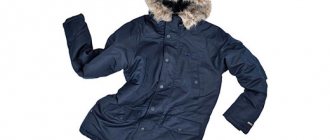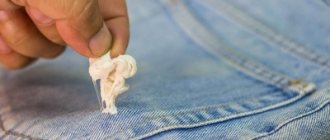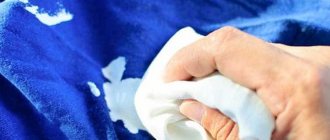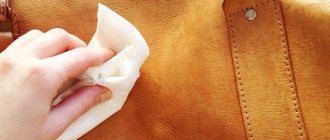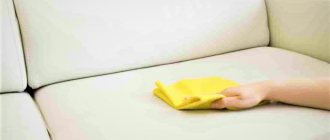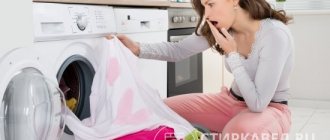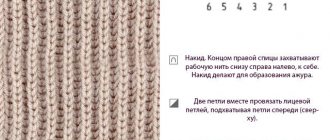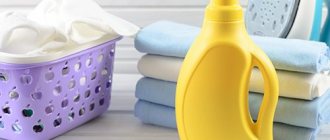White things and linen look very gentle and beautiful. Light colors help improve your emotional state. White linen gives a feeling of cleanliness. However, taking care of such things is not easy. Light-colored items are prone to stains that are difficult to remove. To care for things, you can use specialized detergents, but not all of them can lead to the desired result. The effectiveness of some folk methods has been proven by the experience of several generations of housewives. Bleaching items must be carried out carefully, since the wrong procedure can completely ruin the appearance of the linen.
Method 1 - bleaches
Factory-made bleaches, including chlorine-based products, work well with many stains, as well as yellowness on clothes. For example, white linen made from strong fabrics can easily be tidied up using ordinary “Whiteness”. This tool should be used like this:
- First, you will need to prepare a soap solution by taking three liters of water, a spoonful of powder or laundry soap, and a tablespoon of bleach. In this case, the dosage must be observed very strictly, otherwise the clothes may be damaged during washing.
- After this, the resulting solution will need to be mixed very well and things should be put into it. Products should be left in it for 20 minutes. There is no need to soak them longer in such a bleaching agent - it can damage the fabric.
- Then you should remove the items from this solution and rinse very well. Usually, after such washing, no dirt remains on the clothes.
Important: this product is absolutely not suitable for thin fabrics such as silk, chiffon, or lace. Do not put products made from such materials in water with whiteness even for a minute - they will be hopelessly damaged.
For delicate items, you can use bleaches that do not contain chlorine (for example, Vanish). They do not damage fabric fibers. Depending on the manufacturer's instructions, such bleaches must be added to the water when soaking the product or to the powder when machine washing.
What can harm tissue?
Damage occurs due to the presence of aggressive properties in the bleaching agent. Chlorine is contraindicated for delicate fabrics (silk, chiffon, lace). Undiluted chlorine-containing products can corrode laundry to holes or cause the threads to become brittle. Frequent washing and boiling will ruin things. It is necessary to take breaks - wash 4 times without bleaching. Use folk remedies at home according to instructions and purpose.
Pay attention to woolen fabrics. High temperatures cause damage, the fur settles and loses its appearance. Do not soak laundry for more than 6 hours, do not increase the concentration of chemicals. The clothing labels contain all the necessary information, effective recommendations on soaking and washing methods. If there is an icon in the form of a triangle crossed out by two stripes, then bleaching clothes is not recommended.
The article has been verified by the editors
Method 2 - boiling
This is one of the most radical remedies that allows you to tidy up even colored linen. This method should be used like this:
- First you need to take a large container for boiling things, put laundry in it and fill it with water at the rate of 10 liters of water per kilogram of clothes. You can add shavings of laundry soap to the water - it copes very well with various contaminants.
- The container must be placed on the fire and brought to a boil. All this time, the contents of the brew must be stirred.
- After boiling, things will need to be removed from the boiling water and rinsed well several times.
Important: if you use boiling to bleach things, be sure to put all the items in the boiling water before you put it on the fire. If you put things in a pan in which the laundry is already boiling, the stains on them will go deeper into the fabric, and it will be almost impossible to wash them in the future.
To achieve better results when boiling clothes, you can add a little blue or a couple of spoons of soda to the water. This will enhance the effect of boiling and reduce the procedure time to half an hour.
Tips for not having to bleach
Proper care of clothing will reduce the likelihood of yellowing and staining of items. The main recommendations include:
- Sort your items when you throw them in the wash. Place white items separately from other items. Do not place cotton or linen ones next to each other, they will begin to turn grey.
- Follow label directions. Most often, color loss is caused by non-compliance with the washing temperature indicated on the label.
- Try to wash white clothes immediately after going outside.
- Dry white items naturally, in the sun. It allows you to maintain brightness.
- Place items that are completely dry for storage in the closet. Even slightly damp clothes will turn gray in a week.
- Place colored and white items separately to prevent them from packing and transferring dye to your white clothes.
- The grayness of white items can be caused by the presence of powder and conditioner residues in the fabric fibers. Therefore, resort to additional rinsing of white items.
Method 3 – oil
If your favorite item has turned gray, you can bring it back in order with the help of vegetable oil. To prepare a bleaching solution based on it, you will need:
- a tablespoon of dry bleach;
- 1/2 cup washing powder;
- 2.5 tablespoons of vegetable oil (sunflower oil is suitable);
- 5 liters of warm water.
All presented components must be mixed until smooth, then put things into the resulting mixture and leave to soak for 3 hours. After this, they will need to be washed and rinsed well.
Important: with the help of sunflower oil, you can get rid of even old and difficult to remove stains. Pay special attention to this method if you need to tidy up things that cannot be boiled.
By fabric type
The bleaching method must be correlated with the type of fabric. Using the right method, you can effectively get rid of contamination; incorrect use leads to damage and deterioration of the external attractiveness of the product.
Bleaching wool and silk
For white wool and silk items, yellowing is the most common problem. It is difficult to find a product for bleaching wool fabric on store shelves. In addition, items made from delicate materials are not recommended to be washed in a washing machine. Some remedies may have the opposite effect.
For example, the yellowness will worsen and new stains will appear when you try to bleach the item with white. Whiteness spoils a wool item.
A special mixture based on hydrogen peroxide can remove yellowness and stains from white silk fabric. Pour 5 liters of warm water into a basin and dissolve in it 1 tablespoon of powder, hydrogen peroxide, ammonia and 4 tablespoons of coarse salt. Soak the item for several hours; if the problem does not go away after this time, leave the item in the solution for another few hours. Afterwards, clothes must be rinsed thoroughly.
Mustard is safe for delicate fabrics. To bleach wool and silk, dissolve mustard powder in hot water in a ratio of 1 tbsp. per 1 liter. The solution must stand for 2 hours before use. After settling, drain the water and add hot water again for 2 hours. Soak the product in the drained water for several hours. The number of pours depends on how much water is needed to wash the item.
Flax bleaching
Linen is most often used to make bed linen. The dense structure of flax allows the use of aggressive methods. Soda ash allows you to wash and bleach old stains on kitchen towels. When washing white linen items, add baking soda to the drum of the washing machine.
Persalt is an effective remedy for dense flax fiber. With constant addition during washing, you can keep things white. The gray tint can be easily removed by soaking the item overnight in washing powder and Persol.
Whitening tulle
Hydrogen peroxide and ammonia will carefully bleach tulle fabric and guipure. Pour the substances in a volume of 1 tbsp into hot water. for 10 liters of water. If necessary, the volume of the solution is halved. Place the tulle for 3 hours, then wash as usual.
Special products for whitening
Use industrial whitening products. For dense fabric, such as linen or cotton, white is suitable. For delicate fabrics, whiteness is too aggressive. Chlorine-free products are suitable for such fabrics. Such detergent compositions have a special mark on the packaging.
Chemical components are aimed at whitening and removing stains. Among them are “Vanish”, “Amway” or “Faberlic”.
In the absence of special means, home methods using components that are present in any home will help. When applying methods, it is important to consider the structure of the fabric.
Method 4 – potassium permanganate
This product will allow you to effectively get rid of yellowness and stubborn stains on fabric. It can be used in two ways. So, if the stain is small, you should take a few crystals of potassium permanganate and add them to a glass of ordinary table vinegar, then you will need to take a cotton pad, soak it well in the resulting solution and wipe the stain with it. This product can be used even if you do not have the opportunity to organize a full wash of laundry.
If you need to eliminate a large stain or remove yellowness from an item, you will need to act differently. You should take a bucket, fill it with water, heat this water on the stove, and then add a small amount of potassium permanganate and washing powder to it. Your solution should turn out to be a soft pink color. After this, you will need to wait until this solution cools down a little, wash the items as usual and rinse them well in this product.
Features of bleaching things made from different materials
Before bleaching a product in any way, carefully study its composition. The product will benefit some tissues, while others, on the contrary, will cause irreparable harm.
Synthetics
High temperatures and chlorine-containing products are contraindicated for such things. Products should not be dried in the sun, otherwise the situation will worsen. All other methods listed above can be safely used.
Cotton and linen
Snow-white cotton and linen are washed separately from other items. If the item has acquired a gray tint, you should not be upset, because these types of fabrics can be tidied up using any methods and means, including chlorine and boiling.
Method 5 – soap
This is one of the easiest ways to bleach washed laundry. It is used like this:
- Take a bar of ordinary laundry soap without fragrance. Rub it on a coarse grater or chop it with a knife.
- After this, put the soap in a basin in which the laundry is soaked, or in the powder compartment if the clothes will be washed in an automatic machine.
- After this, the items are washed according to the selected program in a machine or manually.
Important: in order to achieve the best result from such washing, you will need to add a little soda along with soap to the powder container or to the basin with the laundry. This will help refresh even gray laundry. If this step does not give the desired result, try treating stains with hydrogen peroxide.
How to soak laundry correctly
Regardless of which recipe you use, you must adhere to several rules. Carry out whitening following the following recommendations:
- Pre-sort the fabric. Dark clothing items should not get into the basin with bleaching agents. There should be no colored clothes - only light ones. In addition, it is important to consider the degree of contamination.
- Do not wash linen or cotton with synthetics. Sort fabrics depending on whether the material is natural or not. Also keep in mind that woolen clothes have no place where knitwear is soaked.
- Prepare your bleach solution in advance. Whatever products are included in its composition, they must completely dissolve. Otherwise, streaks or stains may remain on the fabric.
- Do not soak clothing in temperatures above 40 degrees Celsius or for too long if they contain metal parts.
- After washing, let the items dry completely. If you remove them while still wet, streaks may remain.
The appearance of yellowness on white towels, sheets, shirts and other things is a common phenomenon.
Note! For soaking you will need an enamel, wooden or galvanized container.
Method 6 - peroxide
Hydrogen peroxide can be used to whiten gray or yellowed lace underwear. It is even suitable for synthetic fabrics that cannot be boiled. Use it like this:
- Take two liters of warm water. Add 5 tablespoons of peroxide to it, stir the solution thoroughly.
- Items are pre-washed by hand or in a machine. After that, they are placed in this solution and left for half an hour.
- After this, the clothes are removed from the solution and rinsed well.
Important: this method can be used not only in cases where white linen has turned gray, but also when colored linen has lost its color intensity. This is one of the few remedies that will not spoil it.
There is another way to bleach things with hydroperite. They use it like this: take two liters of boiled water at a temperature of up to 70 degrees, add a tablespoon of soda ash, as well as a teaspoon of peroxide. Place the item in the resulting mixture for a quarter of an hour, after which it is thoroughly rinsed in regular cool water.
Important: the presented recipe can be used for those things on which yellow spots appeared a long time ago. It is also suitable for various types of fabrics.
Useful tips
Before bleaching your laundry using any of the above methods, read a few important tips to avoid mistakes.
- When choosing a chemical bleach for washing, be sure to read the instructions on the package and follow all the manufacturer’s recommendations. Otherwise, the result may be unpredictable.
- White items should be washed, rinsed and even dried separately from the rest to avoid staining.
- It is impossible to store new things for a long time without washing them, not to mention contaminated ones, so be sure to inspect your linen closet from time to time.
- When a white item has a colored pattern, add salt when washing. This measure is necessary to prevent the product from being painted over.
- You need to rinse your clothes very thoroughly after each bleaching procedure, otherwise they will quickly become unusable.
- Do not soak items with accessories in a solution with a temperature exceeding 40 degrees.
- Each item of clothing should have a label with information on how it can be used; pay attention to all warnings.
Method 7 - ammonia
Ammonia can be used on delicate fabrics, including wool. They do it like this:
- Take 10 liters of water, put 6 tablespoons of salt, 50 grams of powder, a spoonful of peroxide and a spoonful of ammonia into it. All this is diluted to a homogeneous mass.
- Place things in the resulting mixture and leave for 10 hours.
- After this, the products are washed by hand or in a machine, choosing a delicate wash cycle.
Tip: You can even wash silk items with ammonia. It will not damage the fabric.
"Snow" rinses
A lifesaver that returns whiteness to laundry will be homemade rinse aids.
- With boric acid. Dilute boric acid in warm water (one or two tablespoons per 3 liters of liquid). Rinse the washed clothes in the composition for several minutes. After this, rinse thoroughly in clean water.
- With starch or baking powder. Stir two to four tablespoons of potato starch or baking powder into 10 liters of clean warm water. In the composition, rinse the laundry after washing. No additional rinsing in clean water is required.
After some bleaching methods, products acquire an unpleasant odor. To make the fabric smell fragrant, you can rinse the laundry in clean water, after dissolving a small amount of commercial fabric softener or two or three drops of your favorite essential oil.
Method 8 - soda
Baking soda can be used to remove stains when washing by hand, and to treat items when washing in an automatic machine. If you are going to wash the items by hand, you will need to take a basin, pour 5 liters of water into it, add 5 tablespoons of soda, and then soak the items in the resulting solution for 2 hours. After this, they can be washed with powder or laundry soap.
Important: if you are dealing with old stains, be sure to add 2 tablespoons of ammonia to this solution. It will cope well even with difficult to remove stains.
How to bleach things if you are going to wash them in a machine? You will need to take 2-3 tablespoons of baking soda and pour it into the powder compartment before washing. You can use any washing mode, depending on the type of fabric.
Video: removing stains using regular soda and hydrogen peroxide:
The best store-bought bleaches
If things start to turn yellow, you can get by with home remedies, or you can use professional laundry bleaches. Here is a ranking of the most popular and effective:
- Synergetic. The main advantage of the product is the absence of chlorine. The substance destroys tissue with frequent use. Therefore, bleach is gentle and safe for things. The effect is achieved through plant tensides, which help get rid of contaminants. Synergetic can be used on a variety of materials. This is a liquid product that does not contain dangerous and aggressive components. It can even be used to whiten children's clothes.
Universal liquid bleach “Synergetic” is designed for effective bleaching of all types of fabrics and children's underwear. - Lion Bright. A concentrated solution, even a small amount of which can get rid of old stains and stains. Removes yellowness and restores radiant appearance. In addition, the product has disinfectant properties and eliminates unpleasant odors. It is used as a traditional bleach, and is also added to laundry powder. The composition does not contain allergenic or aggressive ingredients.
Lion “Bright” oxygen bleach does not contain chlorine and provides simple and safe bleaching of silk, wool and cotton items. - Sarma Active. This bleach can restore whiteness even to those fabrics that cannot be soaked at high water temperatures (from 30 degrees). Does not contain chlorine, therefore it does not affect the structure of things and does not destroy them. This is an oxygen product that contains active enzymes. Effectively fights yellowness, grayness, and also removes dirty stains from clothes. Used on most types of fabric except wool and silk.
Bleach “Sarma Active”: designed specifically to enhance the effect of washing powder and whiten clothes and linen. - Dr. Beckmann. Super bleach contains natural ingredients that reflect light in the blue range. Thanks to this, things begin to look snow-white. Eliminates yellowness and gray tint. These are safe products that do not contain hazardous substances. All components are completely decomposed and do not pose a danger to the environment.
Bleach “Dr. Beckmann" with its new formula eliminates gray marks and yellowing even more effectively and returns your items to their radiant whiteness.
You can also use other popular means:
- Ecover;
- Chirton;
- Clean Home.
Method 9 – aspirin
Ordinary aspirin copes very well with a grayish or even yellowish tint on clothes. Use this tool like this:
- Take two liters of hot water (but not boiling water), add 5 aspirin tablets of 325 grams each. To make the tablets more easily dissolved in water, they can first be ground into powder.
- The products are left in the resulting mixture for 8 hours. If yellowness on clothes has appeared for a long time, it is better to leave things in this mixture for a day.
- After this, things are washed by hand or in a machine.
Important: when soaking things in water with aspirin, you need to make sure that they are completely immersed in water. If necessary, add a little more solution so that the water completely covers the laundry.
Aspirin can also be used for machine washing. To do this, the aspirin tablet itself must first be dissolved in water, and then the resulting water must be poured into the powder compartment. You can wash things on any acceptable mode.
Have you already read about how to bleach white clothes at home?
How to remove stains
Often, the appearance of white things can be spoiled by suddenly appearing stains of various types. You shouldn’t immediately throw the wardrobe item into the trash bin; perhaps you can remove the unpleasant grayness, yellowness or local dirt yourself.
How to remove yellowness?
You can get rid of the yellowness of white synthetic items using laundry soap, ammonia, hydrogen peroxide, soda or aspirin. You can also wash yellow stains from white clothes using powdered milk. To do this, it is enough to dissolve a two hundred gram pack of the product in warm water and wash the product in the resulting solution.
If the item turns gray
Gray on white synthetic items is usually caused by exposure to dust and dirt, friction against dark surfaces, or improper washing. Boric acid, potassium permanganate or table salt will help get rid of grayness on products.
The most common toothpaste without dyes helps to eliminate grayness on the material. Also for the procedure you will need 125 g of baking powder and 75 g of salt. Mix the substances and add 50 ml of table vinegar and 50 ml of water to the resulting slurry. Apply the finished mixture to the material and leave to act for 1.5-2 hours. After this, rinse the item thoroughly with running water and wash.
If white synthetic clothing has faded
It happens that for some reason a white synthetic item becomes stained after washing. If you notice a problem right away, try immediately washing the product again with a powder suitable for bleaching synthetics. In more difficult cases, use potassium permanganate solution or soda for bleaching.
You can also prepare a special solution for bleaching. To do this, mix 60 ml of medical alcohol, 60 ml of tartaric acid and 30 g of citric acid. Mix the ingredients thoroughly, apply to problem areas and rub into the material with a soft brush for 5 minutes. After this, rinse the substances out of the fabric and wash the product in the classic way.
Please note that using hot water for bleaching is strictly prohibited, as the dye will become even stronger in the fibers.
How to remove grease stains
Table salt or crushed chalk work well for greasy stains. Just rub the substance into the greasy stain and leave for 1.5-2 hours to act. After this, thoroughly scrub the affected area with a brush and wash the item in the machine.
How to get rid of rust stains
You can remove traces of rust from white synthetics using hot lemon juice. To do this, cut several slices of citrus and wrap each in cheesecloth. Place the product on an ironing board or any other horizontal surface, and place lemon slices on the affected areas. Turn on the iron and carefully press the lemon onto the material.
If the item has acquired a yellow tint due to washing in water contaminated with rust, use a mixture of ammonia and hydrogen peroxide to bleach.
How to remove fuel oil stains
Do not wash clothes with fuel oil stains with other items. The best option is to first remove the trace, and only then put the product in the washing machine. To remove small fresh oil stains from synthetic materials, you can use dish soap. Lightly moisten the material and, placing a thick cloth or cardboard under the area with the fuel oil trace, apply 2-3 drops of detergent. Thoroughly rub the substance onto the contaminated area, moving from the edges to the center. Leave the product to act for 30 minutes, and then wash the item by hand.
If the stain is stale, soften it with butter before cleaning. Before processing, cut the desired size piece of the product and keep it in the room for several minutes. Place the oil on the stain and wait at least 3-4 hours. When the fuel oil trace softens, you can clean the stain with household chemicals.
How to get rid of marks under your arms
Sometimes yellowness on a white synthetic item appears only in certain places, for example, under the arms. To get rid of unpleasant contaminants, you can treat problem areas:
- cut half a lemon;
- a cotton swab soaked in a saturated soda solution;
- with a cotton pad soaked in an alcohol solution.
After treatment, be sure to wash the product as usual. Please note that using hot water to remove yellow discoloration will only make the problem worse.
Method 10 – boric acid
How to whiten underwear quickly and easily? Use boric acid for this purpose. To get the best result, you will need to fill a bowl with several liters of warm water and add 2-3 tablespoons of boric acid to it. Things will need to be soaked in it for half an hour and washed as usual.
Important: use this product for children's things: T-shirts, panties, socks. It will not only return the products to their former whiteness, but will also perfectly disinfect them.
Whitening underwear
Over time, underwear loses its snow-white color. Boiling lace underwear is contraindicated. In addition, lace underwear should be washed only by hand to increase its service life. How to bleach lace? Whitening methods depend on the fabric of the laundry.
- You can whiten lace underwear by adding 2 teaspoons of table salt and baking soda to the water with each wash. You can also use oxalic acid
- Oxygen bleach will help restore underwear that has lost its whiteness to its original appearance. The laundry is soaked in medium-temperature water with an oxygen-containing agent, and then washed by hand. In order not to disturb the structure of the fabrics, it is better not to twist them, but only squeeze them slightly.
- White cotton underwear can be bleached by boiling. The method using laundry soap and soda is suitable for these things. It is enough to boil in this product for about 30 minutes. To make the procedure easier, you can use another method. The kits should be soaked in water, adding 1 tbsp. l. ammonia and 0.5 tbsp. l. turpentine for every liter of water used. The laundry should remain in it for approximately 10 hours. It is then washed in the usual manner.
- For synthetic underwear that has lost its snow-white color, boiling is contraindicated, and many bleaching agents are not suitable for it. Synthetics are bleached with peroxide added to warm water. Before you bleach your underwear at home, you need to wash it and only then place it in the prepared solution. To prevent underwear from turning yellow, it is not recommended to dry it on hot radiators.
Method 11 – mustard
Lacy underwear and light-colored items made from delicate fabrics can be bleached using ordinary mustard powder. Use it like this:
- Take a tablespoon of powder, pour a liter of hot boiled water and leave to settle for two hours.
- After this, the water is drained and new mustard is added. This step is repeated until the required amount of water is obtained for the upcoming wash.
- Then simply use the infused water to wash things with soap or powder.
Important: unlike other presented methods of bleaching things with folk remedies, this one can be used quite regularly, since it is least harmful to the fabric itself. You just need to get used to using settled water, and there will be no problems with it.
How not to spoil it?
Following the recommendations will preserve the quality of the item and restore its original whiteness.
- It is strictly forbidden to remove rust from white items using bleach. Soaking results in a general yellowing of the material.
- Prolonged soaking of items with metal fittings leads to oxidation and stains. Soaking in warm water for a short time is recommended.
- Choose plastic basins for the procedure. Chemical compounds interact with the metal surface.
- Boiling water helps to embed stains deeper into the fiber. Removing stains after soaking in very hot water becomes more difficult. In most cases, it is enough to heat the water to 50 degrees for the method to be effective.
- Chlorine-containing bleaches can irreversibly damage items; they are recommended for use on thick fabrics when other methods are useless.
- Before using any method, you must study the product label information.
- Remove any debris from pockets and shake the fabric thoroughly to remove excess dust.
It is important to properly care for and store snow-white items to prevent yellowing and graying of the fabric. Things will retain their appearance longer if they are completely dried before placing them in the closet. A damp item will quickly turn gray during storage. Lightly fluff bedding to ensure aeration of fibers.
Method 12 – microwave
Microwave bleaching is most suitable for items made from dense fabrics, such as kitchen towels. It is used like this:
- To begin with, the product is well moistened under running water.
- Then the item is thoroughly soaped with laundry soap. You can also use regular washing powder instead.
- After this, the product is placed in a plastic bag, put in the microwave and left there for one and a half minutes. If the product is very dirty, you can run the microwave for 1 minute 3 times in a row at short intervals.
- After such washing, the product will need to be rinsed additionally to remove traces of soap. This can be done manually or in a washing machine.
Important: you should not do this with things that have difficult to remove stains, for example, blood stains. They can eat into the fabric. If your white linen has simply faded, this option is ideal.
Industrial whitening products
Optical
This is a certain chemical compound capable of reflecting light, this effect is achieved thanks to special dyes that do not wash off when rinsing. And when they come into contact with something sunny, they reflect a bluish tint.
One of the main disadvantages of this product is an allergic reaction. Therefore, they are categorically not recommended for use on children's clothing.
Oxygen
Oxygen bleaches are available in two forms: liquid and powder, perfect for both cotton and delicate fabrics. They are made on the basis of one of two components - carbonate or carbonate peroxyhydrate.
During the splitting process, it breaks down into soda (which has a bleaching effect) and peroxide (which can release oxygen). With the help of which dirt is more effectively separated from the texture of the fabric.
The most popular representatives of this product:
- Bos OXI,
- Vanish oxy.
- Soap nuts.
- Sarma active.
- Persol.
On the packaging of oxygen bleaches, as a rule, the markings Oxy, O2, Active, Oxygen are indicated.
The main advantages of this tool:
- Works great at low temperatures, 40 degrees is enough.
- Does not harm delicate materials.
- Capable of removing old stains.
- Wash well.
- Rarely cause allergic reactions.
- There are compositions for white and for color.
- Removes almost any pollution.
Their main disadvantage is their rather high cost and high consumption.
Chlorine
A fairly reliable and proven product, the active ingredient is sodium hypochlorite, the main advantages include:
- Ability to remove almost any contaminant.
- Affordable price, these funds are budget ones.
- It has an antibacterial effect, as a result you get clean laundry without germs.
Despite all the advantages, there are also disadvantages, since the product acts quite aggressively on the structure of the material, it can only be used for cotton. It is very important to protect yourself from exposure to its fumes; the room should be well ventilated, and you should wear gloves on your hands. The most popular representatives are bleach, whiteness, and Domestos.
Method 13 – machine wash
If you don't have the opportunity to soak your laundry for a long time before washing, you can try bleaching it in an automatic washing machine. This method can be safely used for items made of dense fabrics, for example, linen or cotton, but it will not work for delicate items, including lace underwear. You will need to act like this:
- First, you need to pour the powder itself, as well as special bleach, into the washing powder compartment. Select the dosage of these products according to the manufacturer's instructions.
- After this, you will need to load white items into the clothes compartment and run a wash cycle with a temperature of at least 70 degrees.
- Then all you have to do is wait until the wash is finished and hang your laundry out to dry. If you do everything correctly, your white clothes will be in perfect condition after this treatment.
If you have tried all available methods on how to bleach washed laundry at home, but have not achieved the desired result, take the items to the dry cleaner. There they can be put in order in just a few days.
Video: a proven method for whitening laundry and removing stains:
Types of pollution
Any product will work more effectively if used correctly; this requires information about the various types of contaminants. Conventionally, they are divided into stains from food products, cosmetics, medications, and animals.
From food products
Food stains appear most often on clothing. Removing such contaminants is not always easy. Grease stains cause problems for housewives. Removing stains from berries, vegetables and fruits is no less difficult.
Fresh stains can be removed at home, but if there is an old stain of this origin, ideal whitening almost always fails.
From cosmetics
Women's white clothing is susceptible to contamination from cosmetic products. Most often these are stains from powder, mascara, eye shadow and lipstick. Stains from nail polish are not easy to remove; often, it turns out that even after cleaning with nail polish remover, the pigment is firmly embedded in the fiber. Acetone can ruin the appearance of things.
From medications
Most often, stains arise from various ointments, iodine, brilliant green, etc. Such stains are difficult to remove. Most of the methods do not bring results and in the end the item is damaged irrevocably.
From animals
White items can be damaged by pets. Most often, they relieve themselves on clothes, and also trample them with dirty paws. In addition to stains, it is necessary to remove the smell from animals, which significantly delays the cleaning process.
In addition, white items can be damaged by blood stains after contact with grass and soil. If dirt remains on the fabric after washing, do not rush to get rid of the product. Use one of the folk remedies for whitening things.
Shirts and blouses
You can bleach white things at home using any of the substances mentioned earlier. The main advantage of home whitening is the availability of bleaching products and their harmlessness to health. Let's look at how to bleach a blouse at home with hydrogen peroxide. Prepare the solution for soaking: 0.5 tsp. peroxide per liter of water. We soak the blouse in it for 20 minutes.
You can whiten a white blouse at home by preparing the following remedy.
We will need:
- water (40 degrees) – 12 l
- hydrogen peroxide – 3 tbsp.
- ammonia - 3 tbsp.
- table salt – 8 tbsp.
- powder – 3 tbsp.
Cooking method:
Dissolve peroxide, ammonia, salt and powder in water and mix. We place the laundry there and wait 4 hours, after which we rinse the clothes well.
Woolen clothes are also bleached. You can bleach wool when it has turned yellow using baking soda and ammonia. Mix alcohol and soda in warm water, put pre-washed items in there and leave for 2-3 hours. For a better result, after this time, prepare another solution: pour peroxide (1 tsp) and ammonia (0.5 tsp) into water. We place the woolen item in the new solution for 25-30 minutes, then rinse it in cold water. When rinsing, it is advisable to add vinegar.
Citric acid also has bleaching properties. How to bleach a white shirt at home with citric acid? When you wash your shirt (or chemise), add 3 teaspoons of acid to the powder.
Whichever whitening method you use, the result will be positive. And you will wear your things for a long time.
Preparing for washing
To ensure that the laundry becomes white and all stains are removed from the fabric, you need to prepare things for washing. It is better to do this by soaking them first. Pour warm water into a wide basin, add washing powder, bleach (if the fabric allows) and place the laundry. Leave the items to soak for 4-5 hours, and then proceed to washing.
If you plan to use a certain bleaching product, do not be lazy and test its effect on an inconspicuous area or a separate piece of the same fabric so as not to spoil the laundry.
Improvised means and folk methods
Some housewives find washing kitchen towels with vegetable oil a little confusing, because they are sure that grease can only contaminate the fabric. However, there is an old proverb that says that like can conquer like. Therefore, it is quite possible to deal with greasy stains on kitchen towels using an oily solution.
In a special composition for washing, it is the oil that softens even outdated dirt and facilitates its gentle removal.
In order not to spend money on expensive household chemicals, housewives attack stains with the help of products that can always be found in a home medicine cabinet or kitchen bins. And these methods successfully remove dirt and yellowness.
Soaking in one of the following solutions works effectively:
- A basin of hot water (approximately 8-10 l) 150 g of soap or powder 5 tbsp. l. sunflower oil. Dirty towels are left in the magic solution for 8-10 hours. Using vegetable oil, you can get rid of old greasy stains, traces of juice, wine, coffee, yellowness, and grayness. The method is applicable for any textile products: terry and waffle, light and colored.
- Bowl of hot water 8 tbsp. l. salt. Towels are immersed in the cleansing mixture for a couple of hours. The solution is capable of removing the most stubborn stains.
- Bowl of hot water 7 tbsp. l. salt 3 tbsp. l. hydrogen peroxide. Textiles are soaked for 5-6 hours. The result often exceeds all expectations.
- A basin of water 200 g of soda. Very dirty towels are kept in the solution for 4-5 hours. If the dirt is fresh, it is enough to wash the textiles in the washing machine using the normal cycle, but adding 5 tbsp instead of powder. l. soda The method is ideal for removing stains from cream or white fabrics.
- Water ammonia. The ingredients are mixed in equal proportions. Leave kitchen towels in the resulting solution for at least half an hour. This allows you to get rid of deeply ingrained oil stains and coffee stains.
If the stain is small, the product is usually applied locally:
- Laundry soap. An ordinary brown block can work wonders. The wet product is thoroughly rubbed with soap, wrapped in a plastic bag and forgotten about for several hours (preferably overnight). The method is universal: it perfectly removes recent and stubborn stains from any fabric.
- Dishwashing liquid. It helps remove traces of grease from textiles at home, especially if the dirt is fresh. The product must be applied to the stain and left for a short time (half an hour to an hour).
- Lemon acid. A simple substance effectively removes traces of beets, tomato juice, and coffee. First, you need to wash the textiles with laundry soap and wring them out well. Apply dry citric acid to the stain so that the powder completely covers the stain. A fresh stain comes off in 10-15 minutes, an old one in an hour.
An effective way to combat persistent pollution was invented by the inhabitants of the Land of the Rising Sun. Russian people sometimes call this method lazy, because the washing process takes very little time and effort. Ingredients needed:
- a basin of water heated to 60 degrees;
- 5 tbsp. l. vegetable oil;
- 1 cup mustard powder;
- 3 tbsp. l. 9% vinegar.
Instructions:
- Towels are immersed in the resulting mixture for 12 hours.
- At the same time, the container is covered with film or a plastic bag on top to ensure a tight seal.
- After soaking, the items are lightly washed.
- Then rinse, alternating cold and hot water 4-5 times.
Basic Rules and Precautions
If you handle white things with care, they will last a long time. First, you should familiarize yourself with the main rules for caring for clothes:
- Before using the product, read the manufacturer's instructions on the label for care information.
- Before washing, soak the laundry in a special powder, and treat traces of heavy soiling with a stain remover or bleach.
- Wash white clothes separately from colored and black items; it is also recommended to sort items by fabric type.
- Dry the laundry in the sun, turning it inside out.
Study the manufacturer's instructions on the label Soak the laundry in a special powder Wash white clothes separately Dry the laundry in the sun, turning it inside out
Dirt and stubborn stains can be removed with special bleaches purchased from household chemicals departments, or you can prepare the products yourself. Washing can be done manually or in an automatic machine. Before you start whitening, there are a few useful rules to remember:
- To avoid streaks, you need to follow the proportions and use a lot of water; the product should float freely.
- When boiling, make sure that the laundry does not stick to the walls of the pan and does not burn.
- When using caustic substances indoors, you must open windows and wear rubber gloves.
If we are talking about washing children's clothes, then the products must be hypoallergenic and not have an unpleasant odor. It is better to use a special powder. Traditional methods of dealing with stains include salt and starch. It is strictly forbidden to use chlorine or vinegar.
Observe the proportions and use a lot of water When boiling, make sure that the laundry does not stick to the walls of the pan and does not burn Open the windows and wear rubber gloves
How to bleach things at home: traditional methods
In every housewife's arsenal there will probably be such a household chemical item as bleach. There are different types of bleaches, so read the instructions carefully. We list the most popular and widespread means for removing stains from white things.
Chlorine bleaches
The most popular brands are “Belizna” and “Ace”.
The main component of “Whiteness” is active chlorine. This is what removes stains and whitens the material. In addition to chlorine, Belizna may contain surfactants that enhance the effect of the product. Using “Whiteness” you can bleach only cotton and linen items. Silk, wool, and synthetics will not tolerate washing with “Whiteness”. And before bleaching cotton and linen fabrics, you should carefully read the instructions and follow the exact dosage. Otherwise, things will quickly wear out and become unusable.
Whiteness perfectly whitens dense fabrics
“Whiteness” is used only for hand washing! Do not add the product to the washing machine!
Use “Whiteness” depending on what result you plan to see after washing. If you want to maintain the white color or update it, rid things of yellowness, do the following:
- In 10 liters of cool water, dilute 2 tbsp. l. Whiteness.
- Soak the laundry for 20 minutes. Soak the laundry for 1 hour if you want to remove the yellowness and return the original color.
- Rinse the laundry thoroughly.
- Wash it.
If you need to remove a stain from thick fabric, for example, from a bedspread:
- Apply Whiteness to the stain.
- Hold for one minute.
- Soak the item with washing powder for 4–5 hours.
- Rinse.
- Wash it.
When working with Belizna, take precautions: wear gloves, avoid contact with eyes and respiratory tract.
By the way, “Belizna” retains its cleaning properties for six months and cannot be stored in the cold. Use the opened bottle within 6 months and store in a dark, warm place.
Oxygen bleaches
Oxygen bleaches are less aggressive than chlorine bleaches. The active ingredients in their composition are hydrogen peroxide and sodium percarbonate. Surfactants and conditioner can also be added to the bleach. Therefore, as a rule, oxygen bleaches are produced in liquid form. But there are also powder products. Brands of oxygen bleaches:
- Shabondama;
- EcO2;
- Vanish;
- Persol Extra;
- Ace Oxi;
- Clax Sonril conc 40A1;
- Ecover;
- BOS Plus and others.
Oxygen bleaches can be used for hand washing and machine washing. Bleaching agents of this type are intended for both white and colored laundry.
If you machine wash, add oxygen bleach and laundry detergent into the dispenser. Calculate the portion according to the instructions.
For hand washing, we recommend soaking with bleach. Also see the instructions for the product for soaking time.
Optical brighteners
Optical brighteners are not represented by any separate products. They are included in washing powders and stain removers. The principle of their action is tinting. That is, the spots do not disappear anywhere, but are simply painted over with fluorescent paints.
When choosing bleach, carefully read the instructions, which should indicate the types of fabrics for which they are intended. Remember that chlorine bleaches should not be used when washing delicate fabrics.

